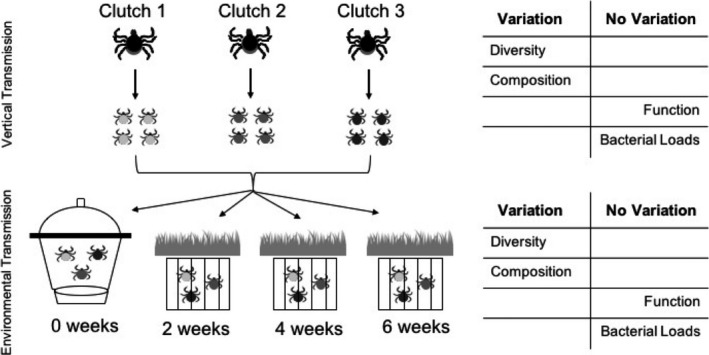Figure 1.

Experimental setup and main findings. Larvae from 3 maternal adults (clutches) were randomly assigned to environmental exposure treatments which included remaining in laboratory, or spending 2, 4, or 6 weeks buried in soil in oak woodland habitat. These vertical and environmental transmission routes generated variation in microbial diversity and composition across clutch and exposure groups, but not in predicted microbial function or microbial loads
